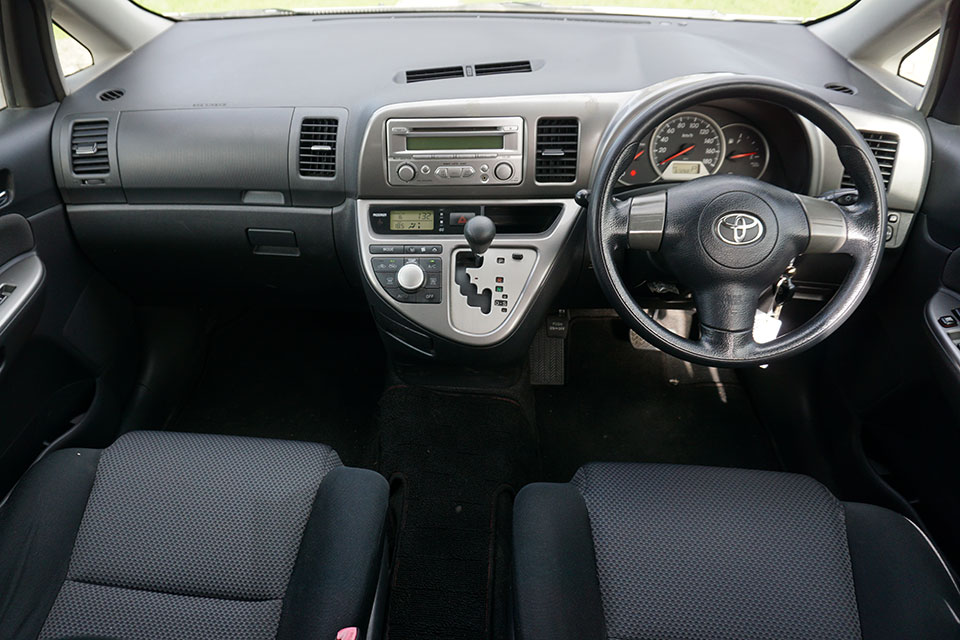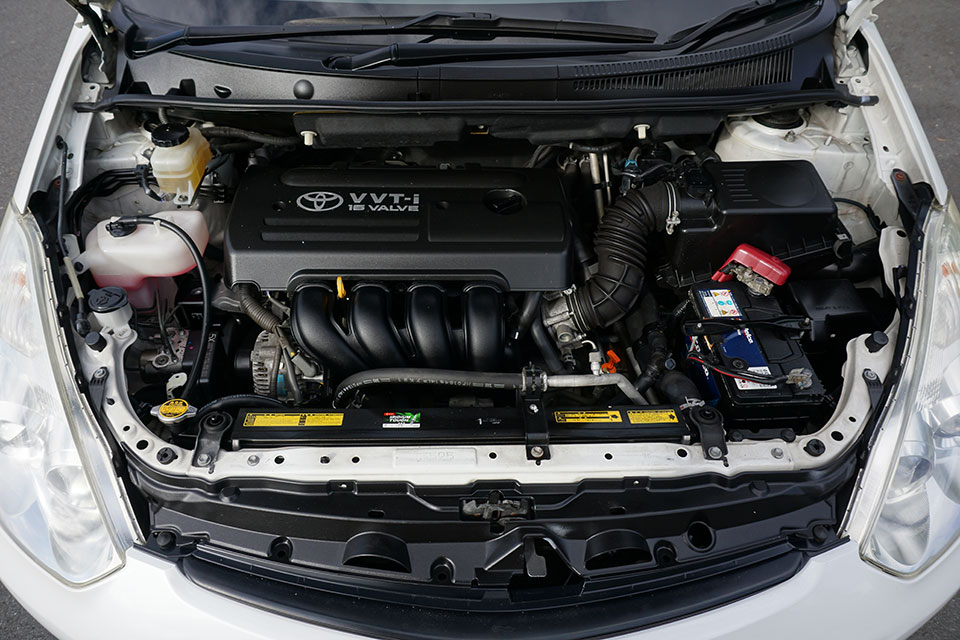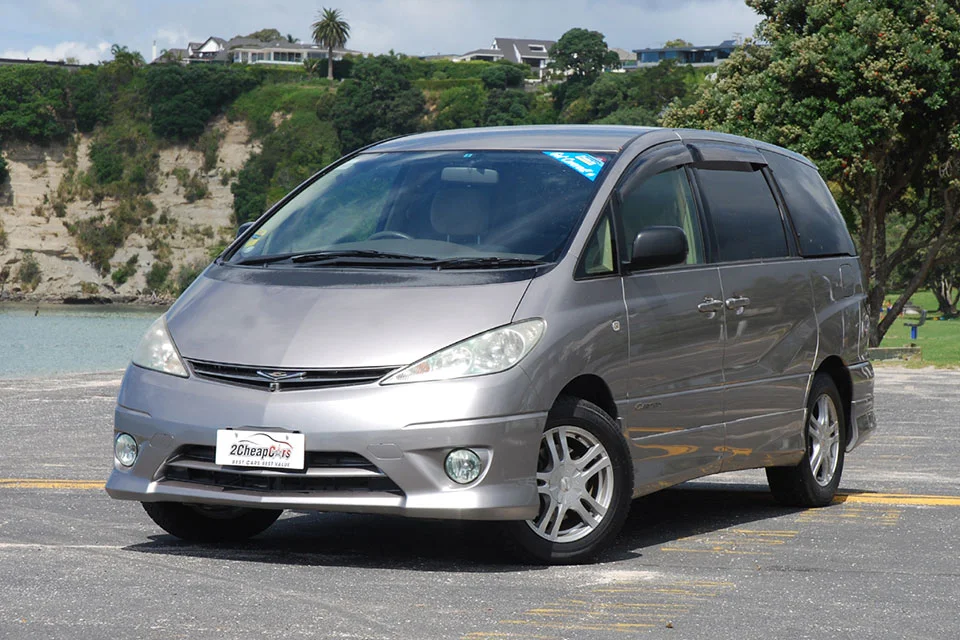Toyota Wish 2003-2009 used car review
The Toyota Wish is a small, zippy people mover that can carry up to seven in reasonable comfort.

The Toyota Wish is a small, zippy people mover that can carry up to seven in reasonable comfort. They will have to leave their luggage behind.
Placed in Toyota's people mover range under the larger Ipsum and Estima, the Wish is closely related to the popular Corolla hatchback. It quickly became a top seller in Japan and across South-east Asia, where its size and durability has made it popular as a taxi. The Wish was never sold new in New Zealand. All the cars here are used imports.
Inside and out
The Wish has a unique look for a small car. It is long and narrow, with a pointy nose and an aerodynamic, curved roofline - a little like that of a Prius. There is a chunky pillar behind the driver and the rear pillars are blacked out to blend in with the dark-tinted windows.
The rear doors are the standard outward-opening type, unlike the sliding type commonly found on this kind of vehicle. At the front is a badge for the dealer network it is sold through, rather than the usual Toyota badge, which is found at the rear instead.
Several seating configurations are available. Standard models can have a car-like format of two front seats and a three-person rear seat or the same with a folding third row of two seats. High-end models can be optioned with three rows of two seats for more passenger space.
With a high roof, the front two rows are spacious. The front seats are very comfortable, with large, soft and supportive bolsters. The second row will handle three adults comfortably for short trips. The third row has some legroom but is best sized for children.
With all three rows of seats in place, there is very little space for luggage. Toyota doesn’t list the capacity and we think you could squeeze in two small suitcases at best. That makes the Wish unsuitable as the primary car for a family of more than five people. With the third row folded, capacity is far more impressive and we think three large suitcases will fit.
The dashboard focuses towards the driver with all the controls for radio, CD player stereo, climate control air-conditioning and transmission raised in a cluster close to the left of the steering wheel.
The radio will require a band expander to receive local stations. The wheel itself is a sporty shape, leather covered and pleasant to grip. It is adjustable for tilt but not for reach. The gauges are large, round and easy to read. The handbrake is a pedal-type to allow for an unobstructed path between the front seats. A second glove box gives extra storage.
An issue we have discovered from our time in Wish taxis overseas is a lack of rear ventilation outlets. The only air available comes from vents in the dashboard and two inadequate vents under the front seats. In warm weather, little of this air makes it to the second row and even less to the third.
On the road
The most common Wish sold in New Zealand is fitted with a 1.8-litre four-cylinder petrol engine paired with a four-speed automatic gearbox. Less common is a 2-litre engine paired with a CVT automatic transmission. Both options are available to be shifted manually. The 1.8-litre engine produces 97kW and 170Nm. Paired with this transmission, the combination is fairly zippy with one person on board. It is quick to accelerate and reasonably quiet.
The transmission can be shifted manually although it does a good job on its own. We were impressed with how quick and light the steering is; it takes little effort to change direction down city streets. The ride is quite soft and there is a little body roll but it is not excessive. The brakes feel good and perform well although, again, it should be noted this is with only one person on board.
We couldn't find an official recommended tow rating for the Wish. Towbars are available for this model from non-official suppliers, rated at 450kg (unbraked), which is a small trailer, or up to 1,000kg (braked), a small boat.
Visibility from the driver's seat is fine looking forward. It is more restricted behind, thanks to the tinted windows and the third-row seats. Reversing cameras are not standard and we would recommend looking for a car with one or having one fitted. You can do this yourself from $50, or have it done by a professional from $200.
Safety
No local safety ratings are available for the Wish. In Japanese NCAP testing in 2003, it received a five out of six star rating for driver and passenger protection. The testing was done on a car with driver and passenger airbags, the same as our review vehicle. It also has anti-lock braking.
Each rear seating position gets a three-point seatbelt, except the centre position in the second row. ISOFIX child seat mounts are fitted in the second-row window seats.
Reliability
The 1.8-litre engine fitted to the Wish has a solid reputation for reliability. It has a timing chain that does not require regular replacement. The engine does like clean oil and routine maintenance. Not caring for the engine can cause timing chain wear, engine sludge build-up and then blocked oil pathways. That can progress to engine failure.
The larger 2-litre engine has some issues. A member of Toyota’s ‘D4’ engine family, these lean-burn direct injection engines are known to be very sensitive to fuel. There have been issues with rough running and surging. The problems are complicated to work out and there have been reports of high bills for diagnostics. If you do have one of these cars, it is imperative to run it on Premium fuel.
Regardless of the engine, constant velocity joints in the drivetrain can wear out. That issue will make itself known as a clicking from the front of the car when turning at slow speed. Replacement will cost from $400.
Cost of ownership
Toyota recommends servicing the Wish every year or 15,000km, whichever comes first. A dealer quoted us $260 for this service. Changing the brake fluid every 80,000km is recommended, at an additional cost of $60.
RightCar estimates that over 14,000km of driving a year, a Wish will cost $2,410 a year to fuel. The 60-litre fuel tank will cost $120 to fill and should take you 640km before the fuel light comes on.
A vehicle licence for the Wish costs $85.59 a year, with the car in the cheapest ACC levy group.
Trade Me Insurance estimates insurance for a Wish valued at $7,240 will cost $44.16* per month. This is $1 less than a Honda Stream.
Buyers’ guide
This generation of Wish is available on Trade Me priced from $6,300 to $15,000 for later and lower mileage vehicles.
An optional ‘Aero’ package, which includes a body kit, rear spoiler and alloy wheels, is common on higher models.
Variants
- X E - Standard model. Features CD player, electric windows, climate control air-conditioning and steel wheels.
- X – Adds body coloured door handles and wing mirrors, driver's armrest and rear load cover.
- X S – Adds a body kit, alloy wheels, fog lights and leather steering wheel.
- G – An X model fitted with the larger 2-litre engine.
- Z – Based on the G. The second row of seats is replaced with two individual seats. Has larger alloy wheels, a wide body kit and a rear spoiler.
Timeline
- 2003 Launched in Japan
- 2005 Receives a cosmetic facelift, and the 2-litre gained manual shifting
- 2005 Toyota badge replaced with ‘W’ Wish badge
- 2009 Replaced by new model
Details
2007 Toyota Wish X
$6,000 to $13,000 for models which have travelled 70,000 to 120,000km
1.8-litre four-cylinder, 97kW/170Nm (claimed)
CVT automatic, front-wheel drive
Five-star JNCAP
15,000km or 12 months
Space saver
8.6-litres per 100km (claimed)
Regular
4550mm
1695mm
1590mm
Unofficial: 450kg (unbraked), 1000kg (braked)
11.3m
This review covers the Toyota Wish for model years 2003, 2004, 2005, 2006, 2007, 2008 and 2009.
Review vehicle supplied by Turners Cars.
*Our insurance estimates are based on a 35-year-old male with no accidents in the last two years, garaging the car in Mission Bay, Auckland. The car is not used for business and will cover 10,000km to 20,000km a year. We estimate with no option add-ons and $500 excess. Customise your estimate at Trade Me Insurance.
Image gallery
Also consider






